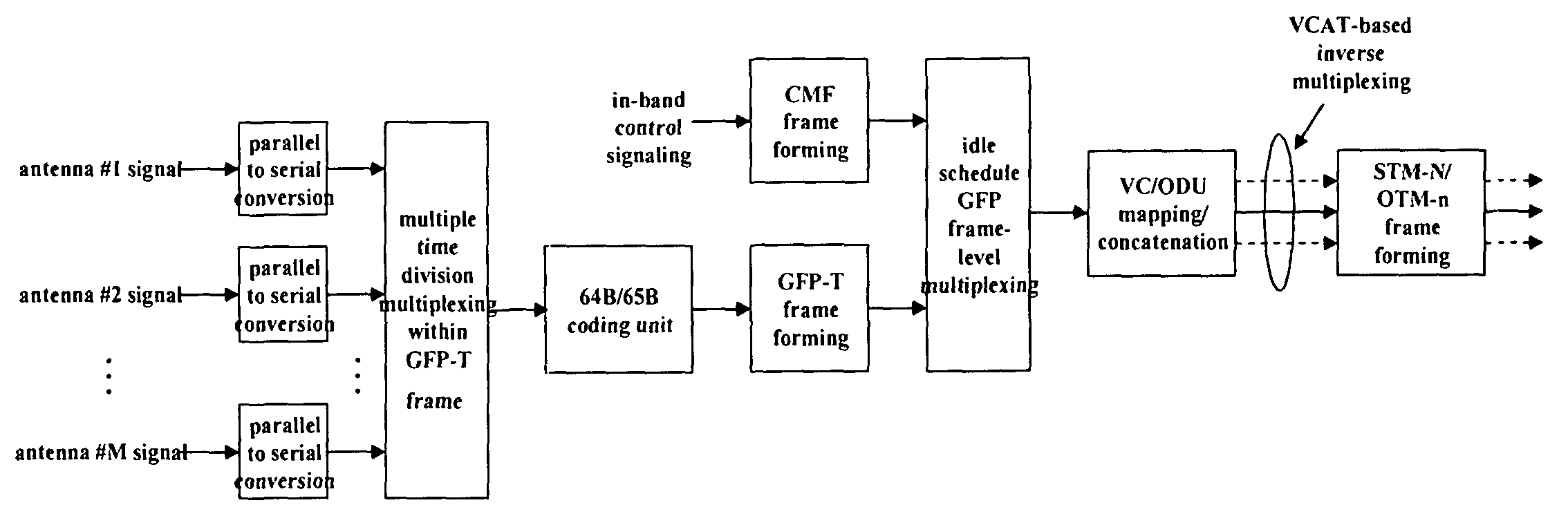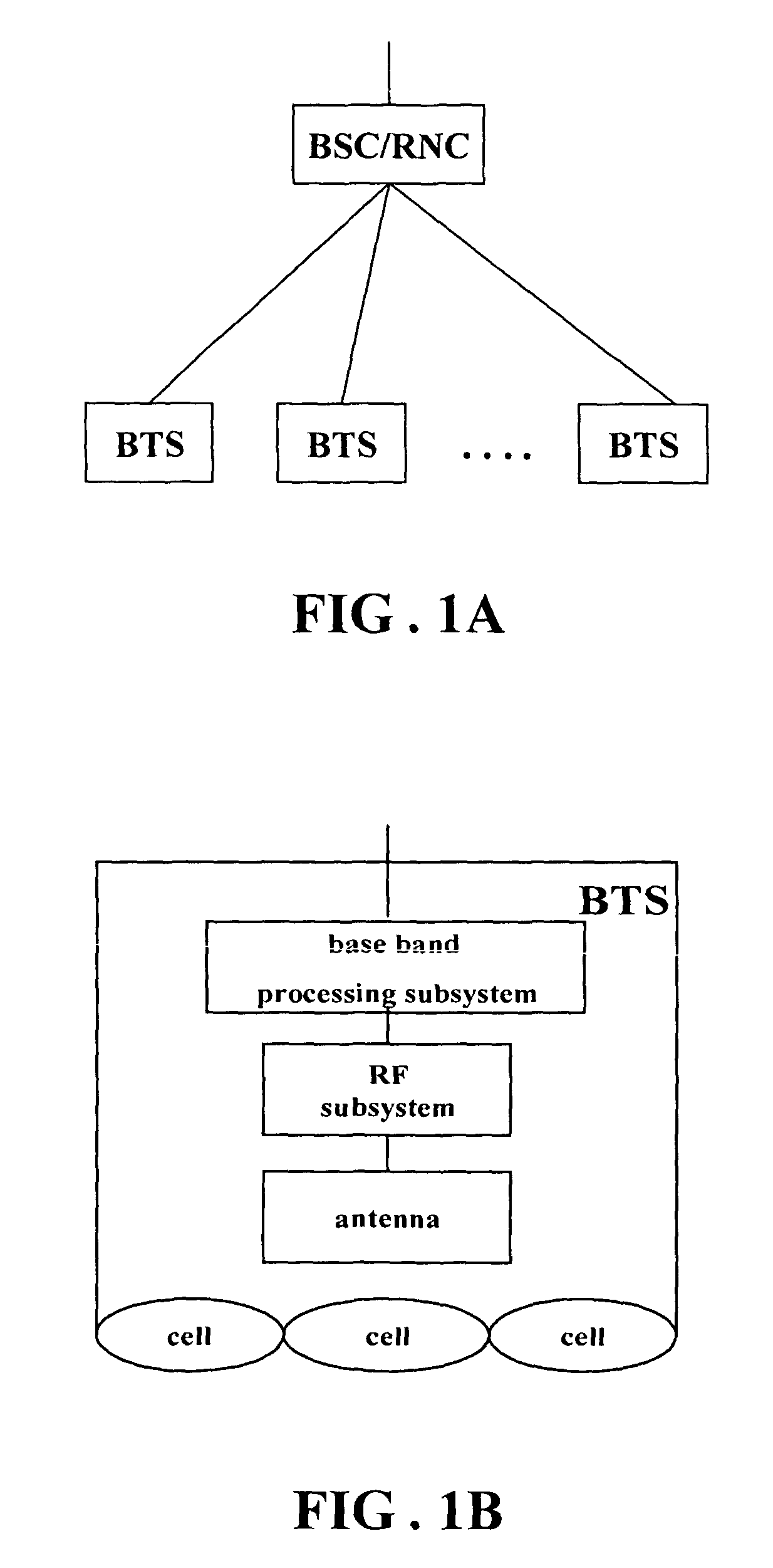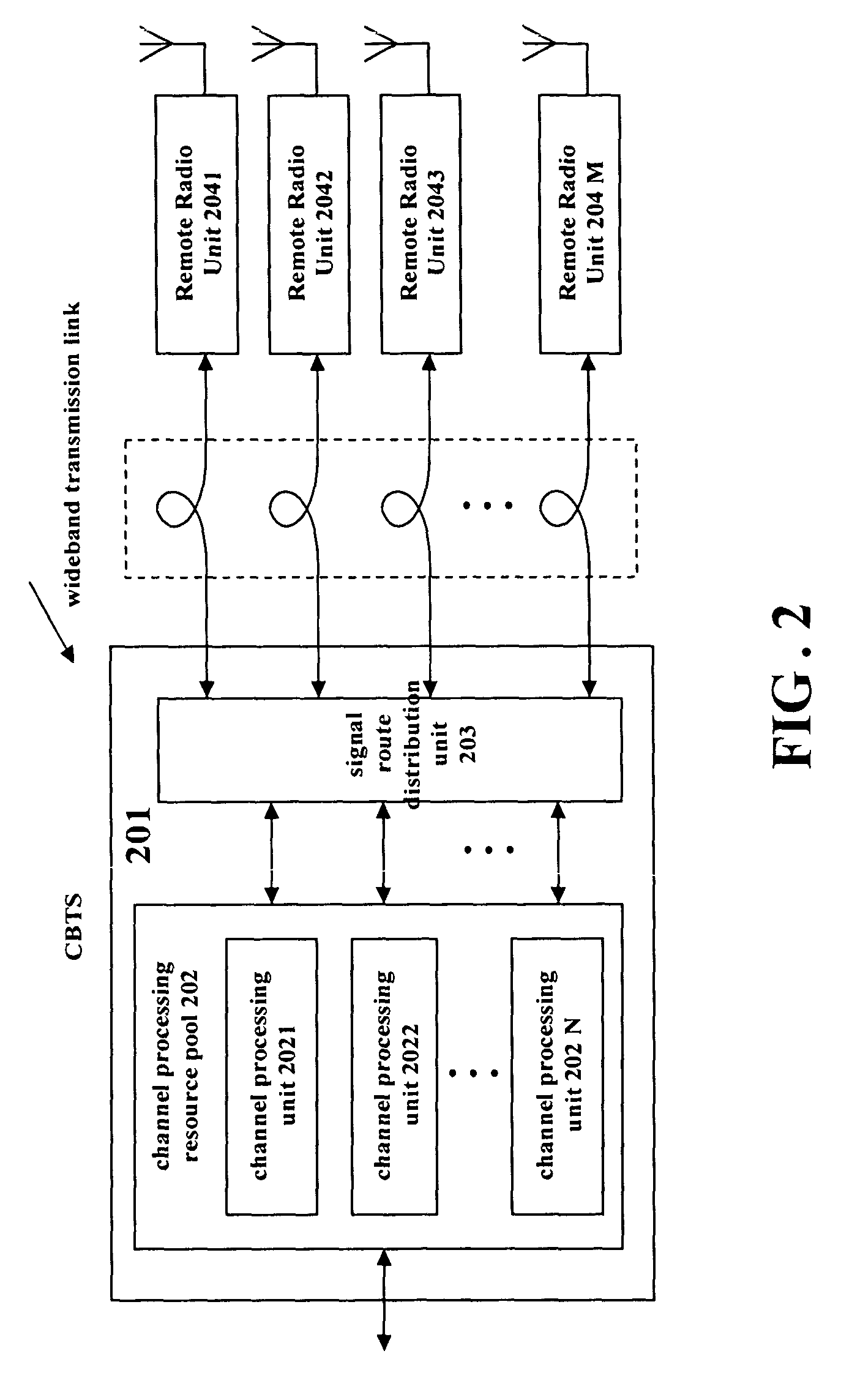Method and apparatus for multi-antenna signal transmission in RF long-distance wireless BS
a multi-antenna signal and wireless bs technology, applied in the field of base transceiver station technology, can solve the problems of nonlinear distortion of wireless signal transmission between the rrus and the main bts, difficult to solve the coverage problem of wireless network with conventional bts technology, and introduce nonlinear distortion. the effect of network cost reduction
- Summary
- Abstract
- Description
- Claims
- Application Information
AI Technical Summary
Benefits of technology
Problems solved by technology
Method used
Image
Examples
first embodiment
The First Embodiment
[0056]FIGS. 6A, 6B schematically show the SDH / OTN-based transmission between the main BTS and the Remote Radio Unit(s) in accordance with the first embodiment of time division multiplexing a plurality of antenna signals of the present invention.
[0057]As shown in FIG. 6A, firstly at the transmit end, parallel to serial conversion is performed on the antenna signals of various antenna branches, such as antenna #1 signal, antenna #2 signal, . . . antenna #M signal, and the converted signals are multiplexed to one signal stream (digital wireless signal data stream) within one GFP-T frame using isochronous slot time division multiplex technology.
[0058]Then the digital wireless signal data stream obtained after multiple time division multiplex within the GFP-T frame and an in-band control signaling are transmitted together. Typically, as shown in FIG. 6A, using CMF frame to transmit the in-band control signaling, the in-band control signaling is sent in the manner of a...
second embodiment
The Second Embodiment
[0061]FIGS. 7A, 7B schematically show the SDH / OTN-based transmission between the main BTS and the Remote Radio Unit(s) in accordance with the second embodiment of time division multiplexing a plurality of antenna signals of the present invention.
[0062]As shown in FIG. 7A, firstly at the transmit end, parallel to serial conversion is performed on the antenna signals of various antenna branches, such as antenna #1 signal, antenna #2 signal, . . . antenna #M signal, and the converted signals are multiplexed to one signal stream (digital wireless signal data stream) within one GFP-T frame using isochronous slot time division multiplex technology;
[0063]Then the digital wireless signal data stream obtained after multiple time division multiplex within one GFP-T frame and an in-band control signaling are transmitted together. Typically, as shown in FIG. 7A, the in-band control signaling is transmitted using 64B / 65B code block control character bit. At the transmit end,...
third embodiment
The Third Embodiment
[0065]FIGS. 8A, 8B schematically show the SDH / OTN-based transmission between the main BTS and the Remote Radio Unit(s) in accordance with the third embodiment of time division multiplexing a plurality of antenna signals of the present invention.
[0066]As shown in FIG. 8A, firstly at the transmit end, parallel to serial conversion is performed on the antenna signals of various antenna branches, such as antenna #1 signal, antenna #2 signal, . . . antenna #M signal, and the converted signals and an in-band control signaling are multiplexed to one signal stream (digital wireless signal data stream) within one GFP-T frame using isochronous slot time division multiplex technology.
[0067]Then the digital wireless signal data stream multiplexed is mapped to a 64B / 65B code block by a 64B / 65B coding unit to form a GFP-T client data frame, and then the GFP-T frame is mapped to a STM-N / OTM-n frame based on the existing technology to realize the transmission based on SDH / OTN. S...
PUM
 Login to View More
Login to View More Abstract
Description
Claims
Application Information
 Login to View More
Login to View More - R&D
- Intellectual Property
- Life Sciences
- Materials
- Tech Scout
- Unparalleled Data Quality
- Higher Quality Content
- 60% Fewer Hallucinations
Browse by: Latest US Patents, China's latest patents, Technical Efficacy Thesaurus, Application Domain, Technology Topic, Popular Technical Reports.
© 2025 PatSnap. All rights reserved.Legal|Privacy policy|Modern Slavery Act Transparency Statement|Sitemap|About US| Contact US: help@patsnap.com



